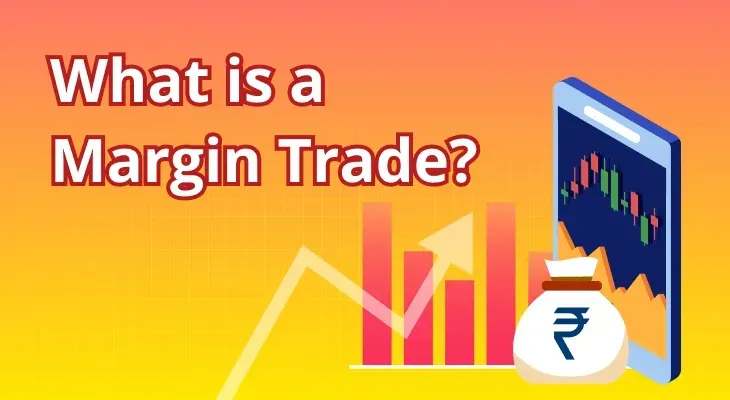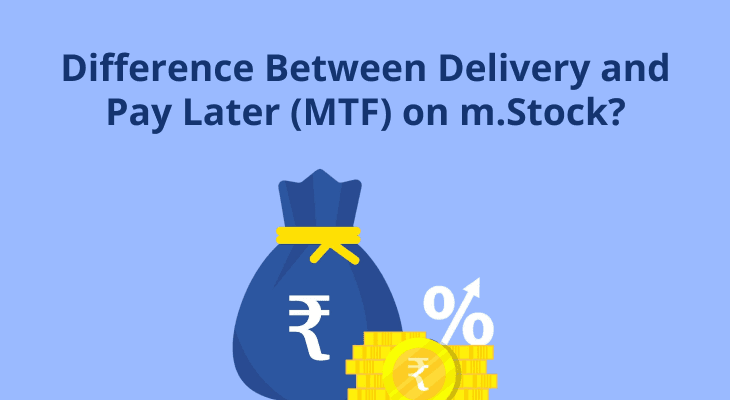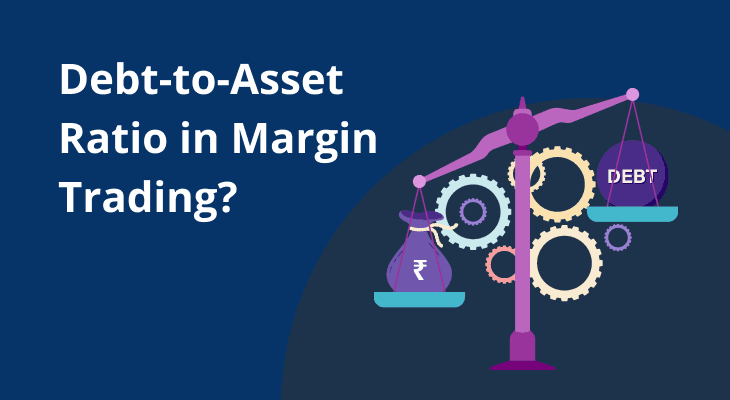
What is a margin trade?
As an investor, you must be well aware of the importance of timing in the market. It can make all the difference between potential gains and losses. People spend hours researching the right scrip to buy at the right price. But what happens when after all your research and analysis you finally do get the right opportunity but are low on funds at the moment? Surely, the opportunity won’t wait for you to borrow from friends or family, if that was possible even. This would not be a problem if you use Margin Trading.
What is ‘margin’?
Before getting into the finer nuances of margin trading, let us first address the question – what is margin in the stock market? In the stock market, margin refers to the amount of cash or stocks that an investor must deposit with a broker or depository participant (DP) to buy other securities.
The deposited collateral serves to provide a cover for any potential losses that may occur due to the fluctuation of the value of the securities and also reduces the risk of default. This margin is expressed as a percentage of the total value of the securities being purchased. This percentage is known as the margin requirement and is typically set by the broker based on the volatility and liquidity of the securities being traded.
The basics of margin trading
Let us assume you wish to buy securities worth ₹1 Lakh, but only have ₹50,000 in your demat account. Now, if your broker has a margin requirement of 50%, then you can deposit the existing ₹50,000 in your account as margin, borrow another ₹50,000 as available margin to trade from the broker, and go ahead with the purchase of the stocks. You will, however, need to pay the interest rate for borrowing this amount.
As you can see, margin trading allows you to leverage your investment by using borrowed funds to buy more securities than you could with your own capital, thereby increasing the potential for profits.
Benefits of margin trading
There are several benefits that you can enjoy with margin trading, such as:
Higher Purchasing Power
You can get higher leverage on your investments by borrowing funds from your broker to purchase securities. This, in turn, increases your purchasing power in the market and can potentially generate higher returns than would have been possible using your own capital.
Diversification
The increased purchasing power allows you to diversify your portfolio, as you can now invest in a broader range of securities than previously possible.
Flexibility
Margin trading can also provide you with higher flexibility in your trading strategies. For example, you can benefit from short-term trading opportunities and respond to market trends more quickly even if you’re low on personal funds.
Risks involved in margin trading
You should note that margin trading comes with some risks as well. You should consider these people participating.
Possibility Of Losses
Your gains and losses, both, get amplified by margin trading. If the value of the securities purchased with borrowed funds declines in value, not only do you risk losing your own capital but also the borrowed funds.
Margin Calls
Some brokers, depending on their internal policies and on the type of trading you do, may require you to deposit additional margin to cover any potential losses. The inability to meet the margin call may lead to the liquidation of your positions by the broker, leading to possible losses.
Interest Rates
Like any other loan, borrowing funds for margin trading comes with an interest payable by you. This can increase the cost of trading and make a dent in your potential profits.
Volatility
The volatility and uncertainty should be well known and understood before using margin trading. Most traders use margin trading for short-term trading, which can involve higher levels of volatility.
Regulatory Risks
Margin trading is subject to regulations set by financial regulators such as the Securities and Exchange Board of India (SEBI) in India. Any changes in these regulations could impact the trading strategies and profitability of margin traders.
Things to consider while choosing a margin trading platform
Margin Trading Facility (MTF) is offered by several brokers via their web portals and/or mobile apps. This allows you to buy securities by putting up a lower capital and borrowing funds from the broker to cover the gap. Top platforms, such as m.Stock, offer funding as high as up to 80% of the value of securities being purchased. Before choosing your broker, consider the following aspects:
Reputation and reliability of the broker and its platform
The interest rate charged, as it directly affects your net earnings on every trade done via MTF
Funding offered as a percentage of the total value of securities. The higher the better.
Any hidden charges (such as brokerage, subscription fee, etc.)
Other terms and conditions applicable to MTF
In Summation
The benefits of margin trading outweigh the risks, which is why it is a popular trading method among seasoned traders. However, it is important to remember that margin trading involves significant risks, as you are risking not only your own capital but also the funds borrowed from your broker. While we have covered the basics of margin trading in this article, you should consider engaging in it after fully understanding the risks involved, fees, interest rates, and the terms and conditions set by your broker.
FAQ
What is margin trading, and how does it work?
Margin trading is a method of buying securities using borrowed funds from a broker. The funds borrowed by the investor are typically used to increase the purchasing power of the investor in the market, allowing them to buy more securities than they could have otherwise bought with their own capital. The securities purchased can serve as collateral for the borrowed funds. While this method can potentially generate higher returns, it can also amplify your losses.
What are the margin requirements for margin trading?
Margin requirements can vary depending on the broker, the securities being traded, and the underlying regulatory requirements. Brokers may require you to deposit a certain amount of funds or securities to cover potential losses. This amount is typically expressed as a percentage of the total value of the securities being traded, and it may vary depending on the volatility and liquidity of the securities. You should carefully review the margin requirements and interest rates of your brokers before engaging in margin trading.
What is the interest rate for margin trading?
The interest rate for margin trading can vary depending on several factors, including the broker and the type of securities being traded. Brokers set their own interest rate that can be as high as 15-18% for some. This interest is payable by you in lieu of borrowing funds, and reduces your overall profits. Naturally, choosing a broker that charges a lower interest and has more flexible terms can help you, potentially, earn more profits. m.Stock, offers margin trading facility at an industry-low interest rate at 6.99% which is 0.0192% per day for funding above ₹5 crore. For funding up to ₹5 crore, the interest rate is 9.99% interest p.a. With up to 80% funding, zero brokerage (if chosen) and no other hidden charges, you can hope to maximise gains by choosing m.Stock as your share trading platform.


